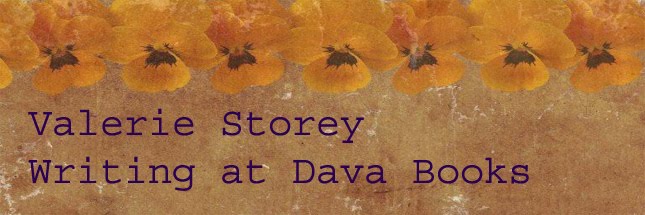Today I was thinking about some of the reasons I started blogging all those four years ago. Here's what I came up with:
- Initially I wanted a vehicle to help get the word out so I could sell more books. Yes, commercialism was high on my list!
- I also needed a way to build my "platform." Although I have a website complete with book ordering info and other pages: www.valeriestorey.com, I needed something to supplement the standing text there. A blog seemed the perfect way to do that.
- I'm busy, you're busy, we're all busy--too busy, unfortunately, to write lengthy personal emails (which replaced lengthy snail mail letters) to each other. But a blog is something I can write and then share with friends and family in one swoop. Believe me, I'm thinking of everyone one of you when I sit down to write each week.
- I love to teach writing. My how-to book The Essential Guide for New Writers, From Idea to Finished Manuscript has helped hundreds of writers to get their words down on paper. Blogging about writing is a way to continue that inspiration.
- I enjoy combining art with my own writing--and blogging fits right in with the creative arts. I have so much fun designing the digital collages that head up most of my posts.
- Working on my blog sometimes feels like I'm in charge of my own little literary magazine. I often think of what I would like to know more about if I was reading a magazine article, and then I write a post about it.
- Blogging has become an important writing practice and discipline for me. It's especially been helpful for encouraging me to show my artwork, eliminating much of my previous anxiety about opening my sketchbooks and portfolios for public viewing.
- More than anything, blogging has become a vehicle to share a conversation with my readers and other bloggers. Oftentimes this conversation is held on places like Twitter and Facebook, and even my writer's group, taking the blog off site and into a larger arena.
- And hey, it's just exciting to be a BLOGGER.
Tip of the Day: If you haven't already, join the site, then leave a comment suggesting a topic you'd like me to write about in the future. I'll give you full credit for the idea as well as include a link to your own blog or website. And you might even win one of the giveaways! Good luck and happy creating. Drawing will be held on midnight, November 2, 2012.





